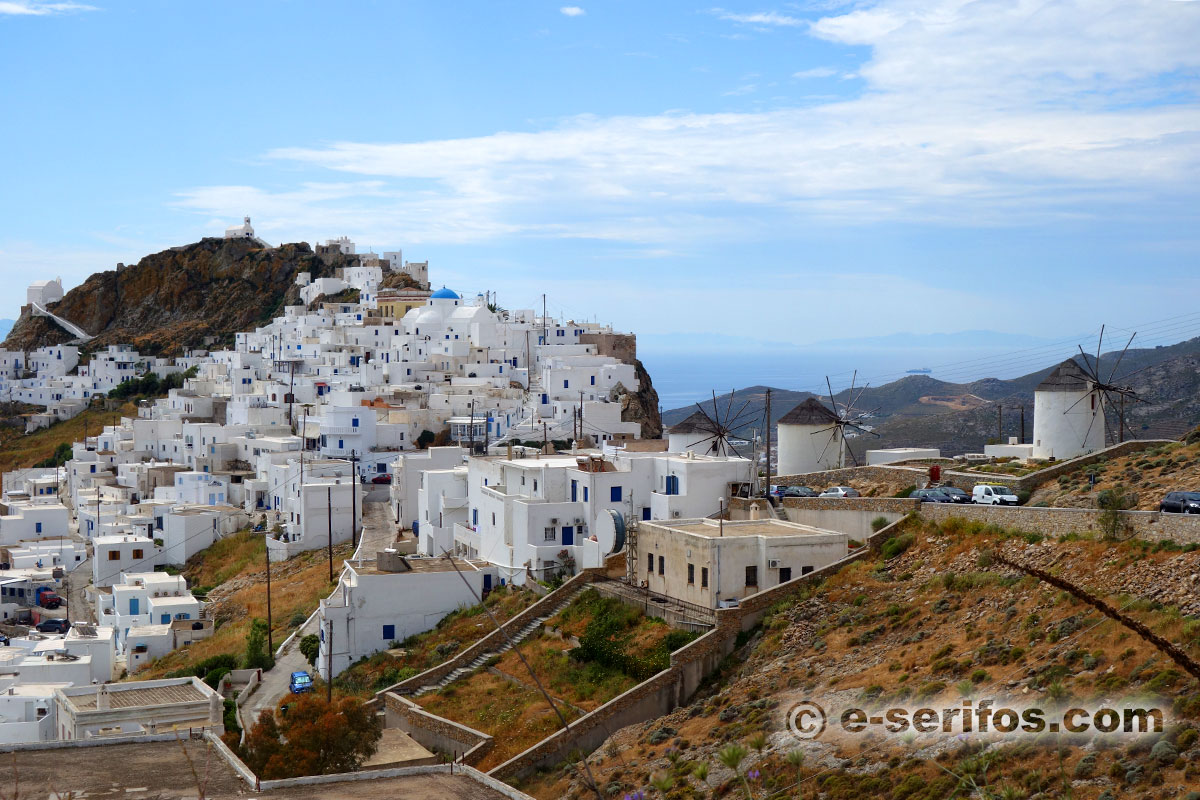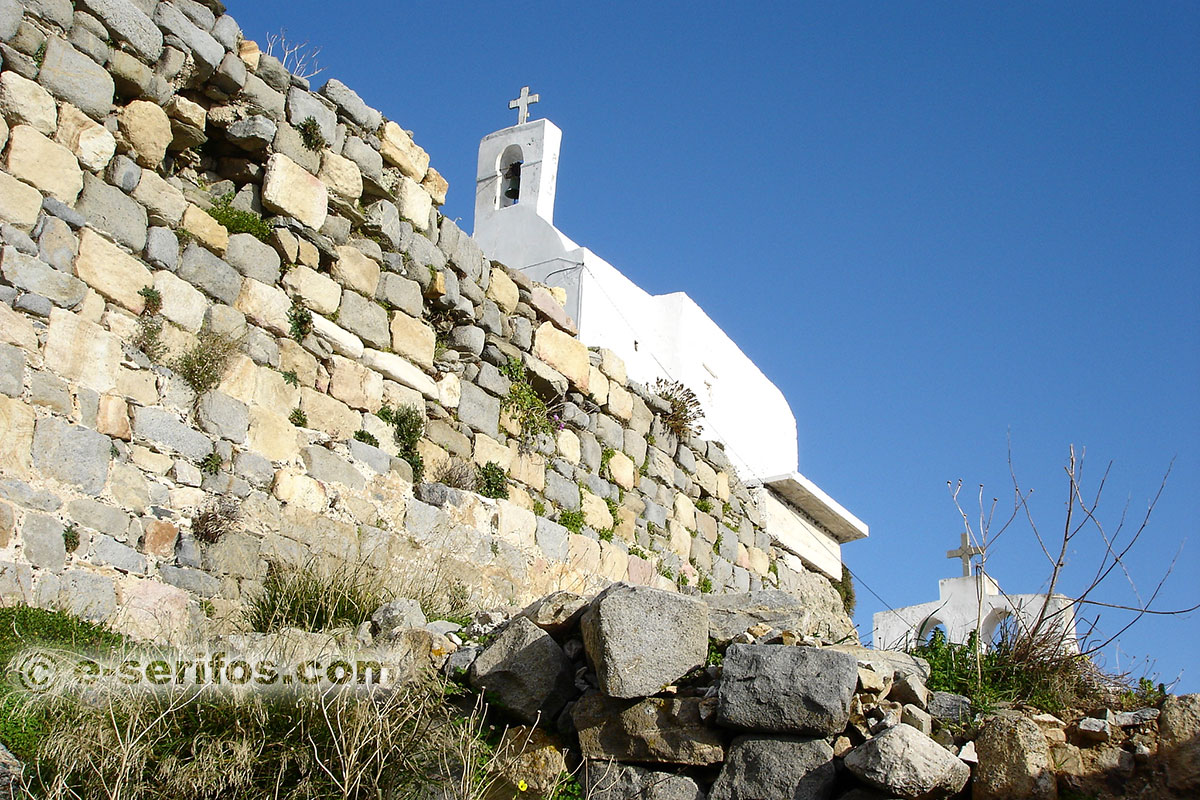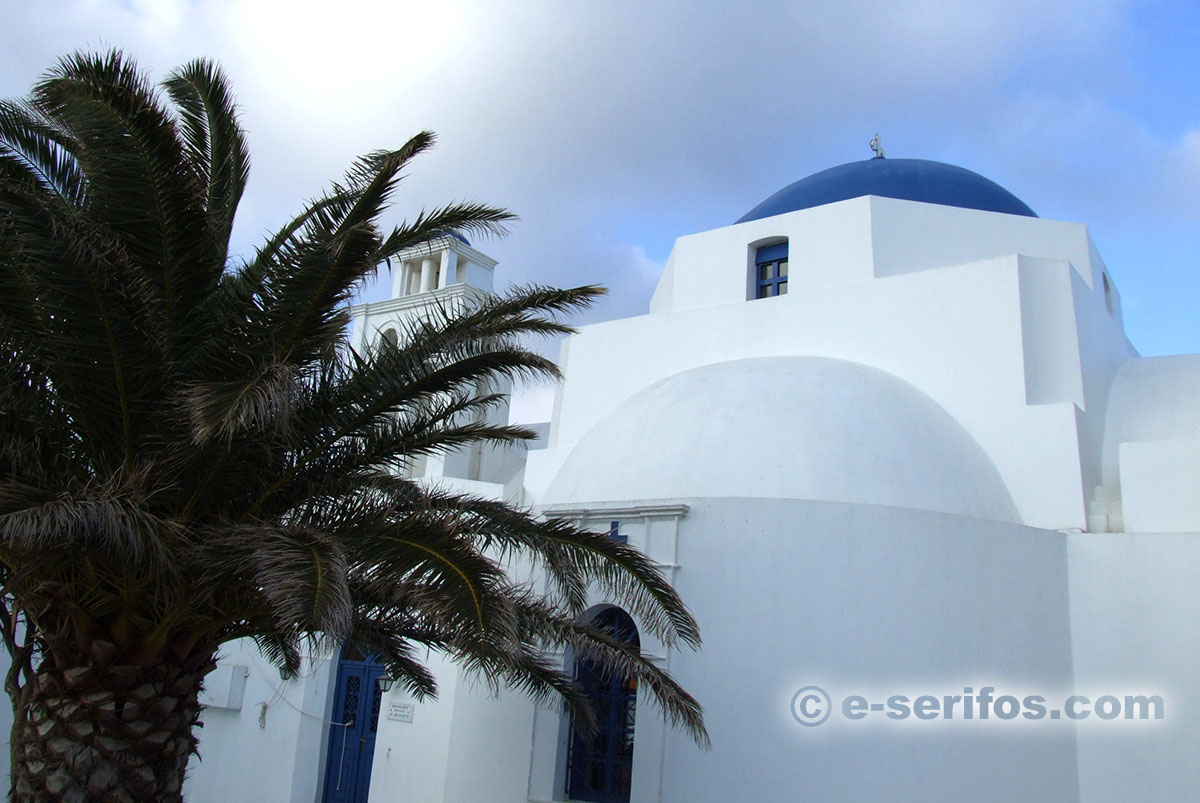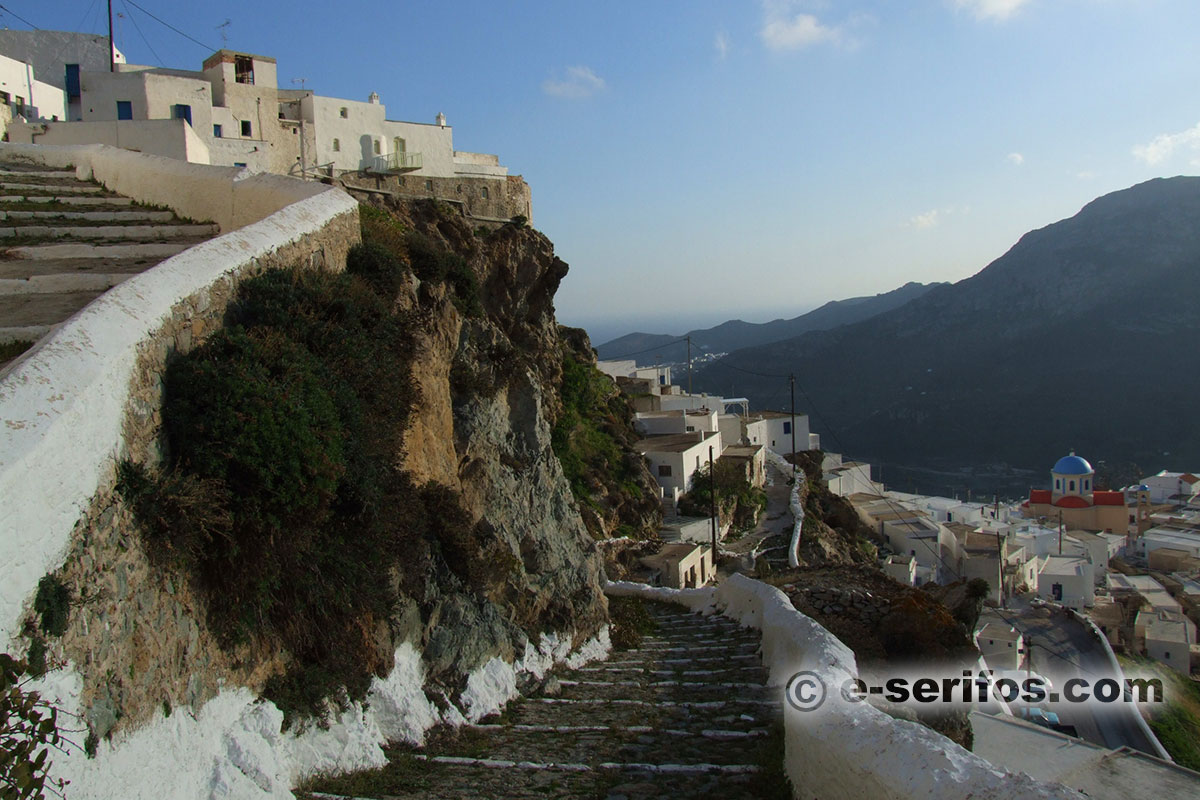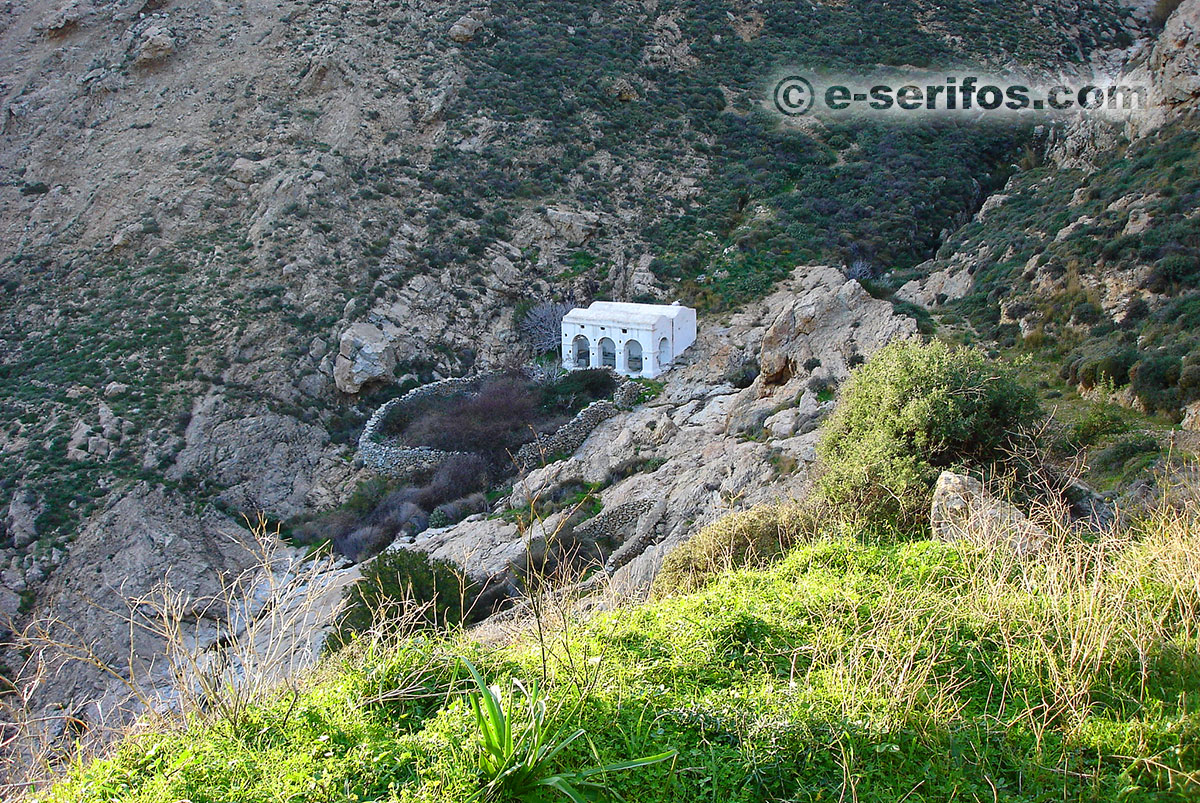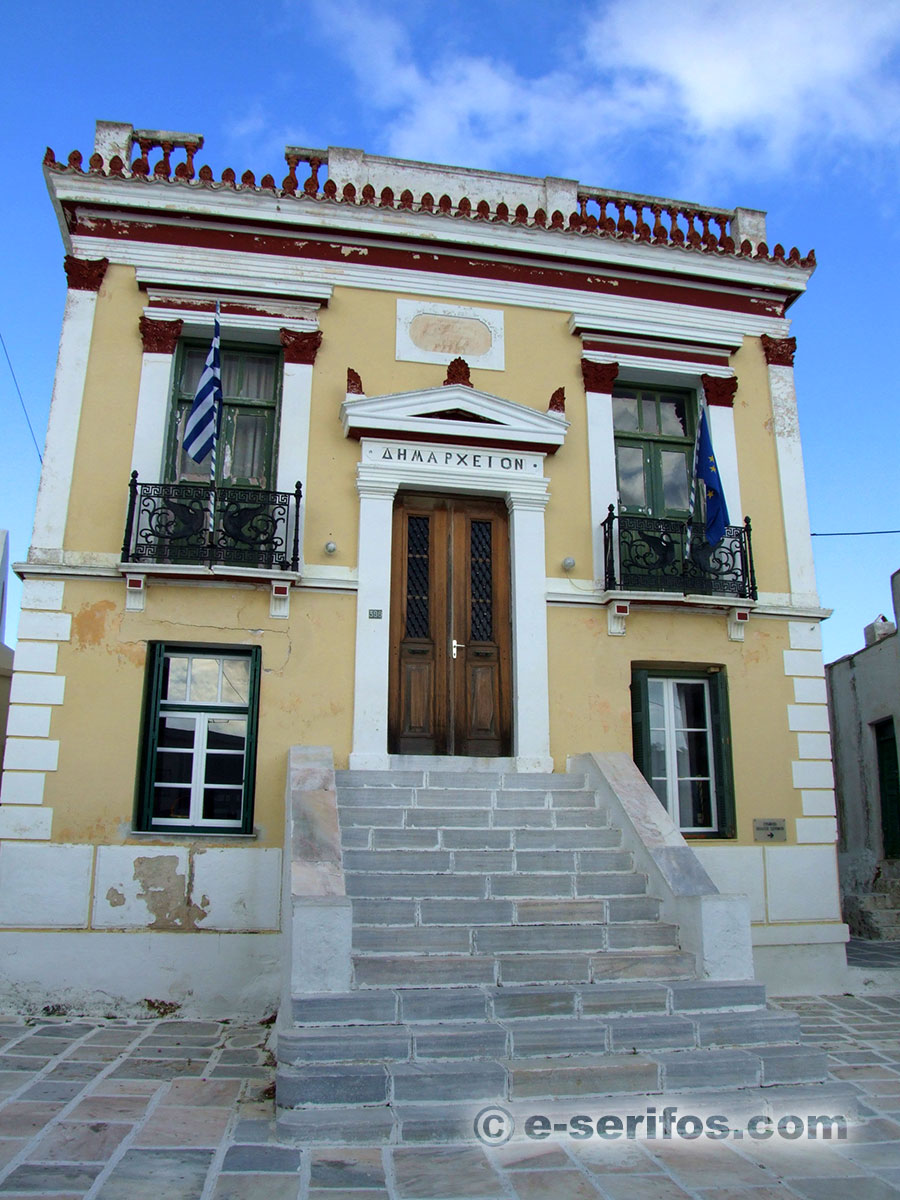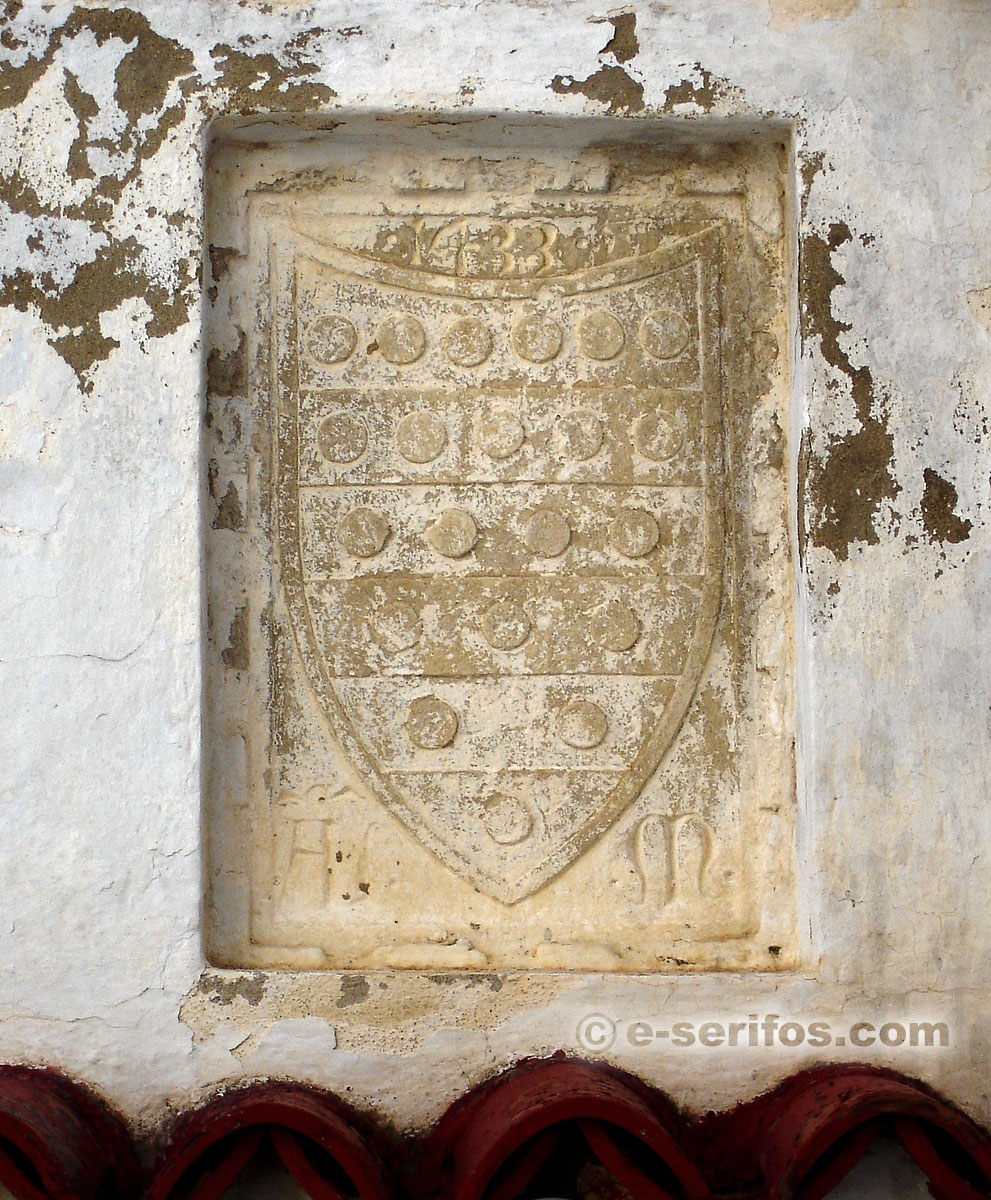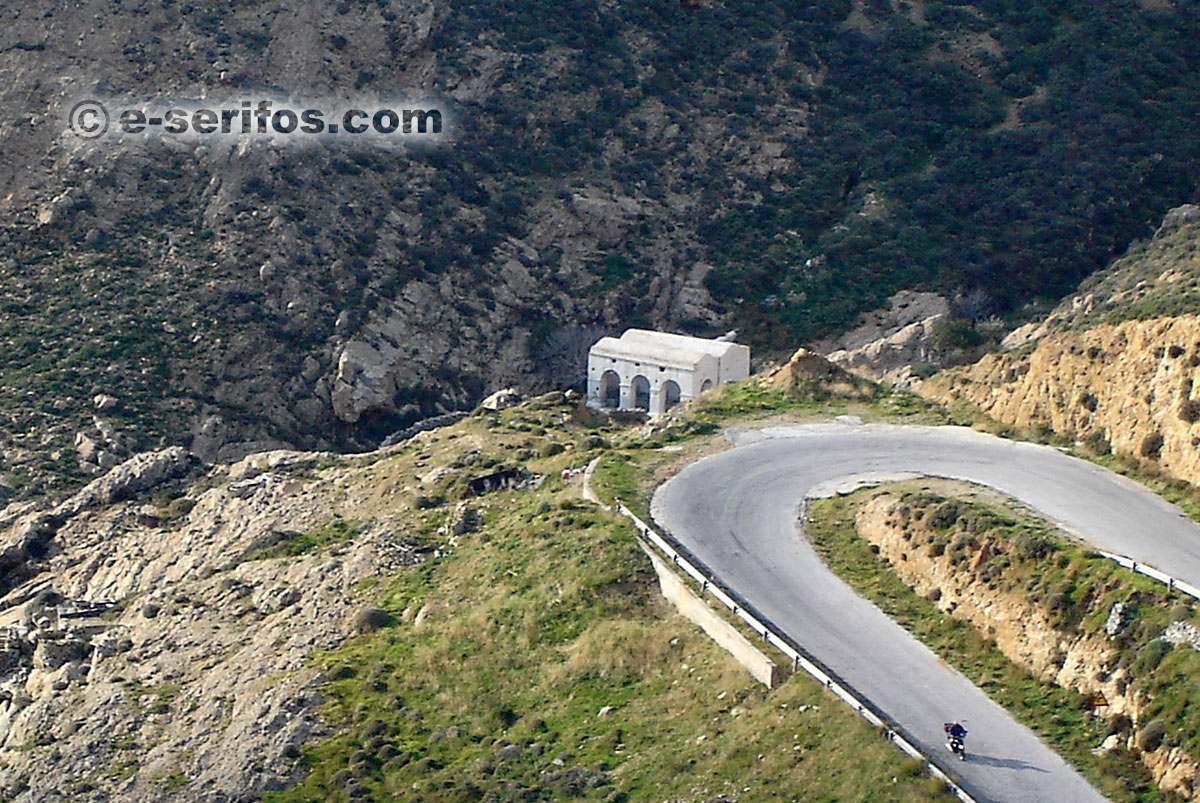Sights in Chora and around
Tour around Chora, the capital of Serifos
What to see at Chora and the surounding area in Serifos
Wandering around the paved narrow streets of Chora you will have the chance to admire its beautiful traditional architecture. There are quarters of two-floored and three-floored houses with narrow facades, which are connected with labyrinthine narrow streets.
If you take these streets you shall arrive at the top of the village with the ruins of the Venetian Castle, which was built in 1434 by the Mikieli family, while on the highest spot of the rock there is the church of Agios Constantinos. From up here, the visitor can admire the Aegean Sea that spreads before him and the islands around Serifos (Sifnos, Kythnos, Milos, Kimolos).
A bit further down there is the church of Agios Ioannis Theologos, built in a cavity of a rock on the ruins of an ancient temple of Athena. Here, according to the tradition, in its catacombs, lies the head of Medusa who, according to the mythology of Serifos, was decapitated by Perseus.
On the way down from the Castle, in the narrow streets of Chora there are many churches as for instance Agios Georgios with the relief figure of a boat on its facade, the church of Stavros with the ancient fountain, Panagia Xekourastra and Agios Eleftherios, where the flag of the revolution was raised on the 22nd of May, in 1821, etc.
At the Piazza of Pano Chora there is the Town Hall, housed in a two-floored neoclassic building and next to it there is the marvelous church of Agios Athanasios with its marble square, which is the island’s cathedral.
In Kato Chora there is the Folklore Museum of Serifos (property of the Serifians’ Assciation), where the visitor can admire some articles of the traditional life of Serifos, as well as some samples of the mineral wealth of this land.
Behind the Folklore Museum there is a small theater with capacity for 300 people, where several cultural events take place. The Archaeological Museum is also situated in Kato Chora and it contains findings of the Classic, the Hellenistic and the Roman Era. At the quarter Varda in Kato Chora there is the church of Evangelistria, built in 1907, where the old center of Chora used to be.
A special place in Chora is occupied by the square of the Mills, where only three of them still survives up to nowadays, restored, and where you can also see the ruins of the other ones.
On the way from Chora to Livadi, at the first hairpin turn of the road and before the big building of the Community Clinic it is worth leaving your car to go down to the old Aquaduct. A short path of 5 minutes walk shall take you there. The white building with the Arcades dates from the 19th century, and it is called Mesa Pigadi or Paspario. It is the place that used to supply Kato Chora with water, and in its basins, the housewives used to do their laundry.
Finally, on the way from Mega Livadi to Chora, a bit after the helicopter airport, there is a very nice view of the dam and of Chora.
Gallery
